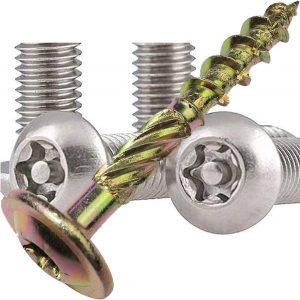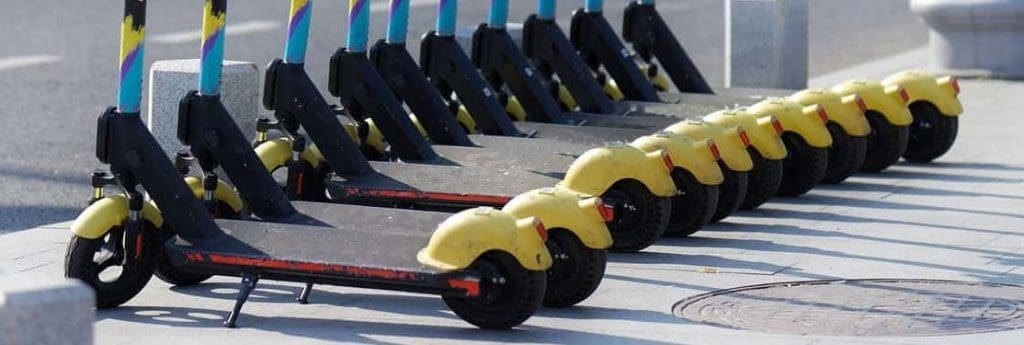Avoid these product design mistakes for a lot of troubles: some product features or technologies are tempting at first, but may, with or without additional factors or errors, be your next ticking time bomb or your disaster waiting to happen, leading to a lot of user dissatisfaction, quality complains, or even legal issues or market recalls.
Contents
- Questionable Product Features Design Mistakes
- Home-calling Device or App
- New Special Electrical Connector
- Device With Separate Software To Configure
- Original Screw Pattern
- Software Driven Shut Off
- No Remote Software Upgrade Possibility
- Over-necessity of Explanations or Labeling
- Grouping Product Features at the Cost of Reliability
- Rechargeable Battery Powered Device, If not Designed Properly
- Challengeable Technology Choices
We have divided here below these questionable mistakes into “user features”, or at least pretending to be for the user’s benefit, and “technical design choices”.
Of course, there may be good reasons to implement these as not being design mistakes, but do some Risk Analyses while implementing any of the below features or technology.
Do also have the long-term in mind, all the Life-Cycle steps of your future product or process, and not only your direct cost, assembly, or solution-finding to meet tomorrow’s project deadline.
The following two posts can be complementary readings on avoiding design mistakes:
Questionable Product Features Design Mistakes
in general,
avoid any product feature … that is not a user feature!
Non-user features may come much more frequently than desirable as specs are written, or the project develops.
Home-calling Device or App
Home-calling device or app: if there is no response … is your product working with fewer features? or maybe stops functioning completely? This is usually closely related to Licence and Subscription but can be for maintenance or other data mining reasons. Mind that, of course, the user’s location may be without connection, your infrastructure may be down, some countries have network restrictions or surveillance, and so on. Not to mention that your company or service provider may disappear or your IP address change …
Tip on Tip: the above “feature” could become very close to the concept of planned obsolescence, depending on how this has been implemented and/or could have been avoided. Think twice
New Special Electrical Connector

Do not design a new electrical connector while OEM component catalogs have tons of them … Think twice before paying ten times more than an off-the-shelf solution, add CAPEX and brick walling your customer and your production by designing a new electrical connector.
And if your product needs an original number of connections, maybe taking the version above, with more wires, may permit future feature upgrades.

Do challenge your marketing if they want to brick wall your customer or want to sell accessories at a high price.
Keep in mind that for some industries, devices, and countries this is becoming illegal to power some home appliances with original connectors.
Note: this also applies to many fluid connectors
Device With Separate Software To Configure

The most underestimated flaw we observe these days, thus the highlight.
If your hardware device is intended to be configured remotely via a desktop app or a phone app … what about this nice user feature when their OS is upgraded or the computer or phone becomes obsolete? Will your device not lose all its versatility or even all its features? Examples include:
- most connected watches
- connected home appliances or home automation accessories
- electronic music instruments
- electric bicycles
… and generally, all small devices that, to gain cost or size, the designers and marketers have decided not to include their own buttons and screen and rely on a remote third party.
As for the battery advice below, of course, if your market approach is only a short-term sell and product life … you may not have the problem … yet. And, of course, this is not the approach we recommend here for value-added and ecological products.
The Million Dollar Tip: we strongly recommend having a clear view of the software upgrades that you will maintain -or not-, and have accounted for this, even long after you do not sell the main product anymore. And to avoid potential legal actions (highly probable if you have a high runner product), do communicate on this since day one (yes, at least the small prints on the box or IFU …)

Original Screw Pattern
With a specific pattern on both the screw and counterpart. If you really -we already challenge that- need something special (high torque, extremely small or big, user-limited access …), tons of unique patterns already exist.
Note: to some extent, this also applies to any specially designed tool.
Software Driven Shut Off
No physical on/off switch, but a fully software-driven on/off having no main switch permits a leaner design, may reduce the cost or size, or avoid some water sealings, but if that function is handled only by software, do ensure that it is robust before implementation to avoid one day having to tell your users:
“Wait until the battery depletes completely” 🙁
or “Unplug the main power cable“, and even in these cases, think twice if the hot/cold boot mode will solve the problem or crash even more.
Tip on Tip: your device does have a physical on/off switch, but it is on the back of the equipment, and the equipment is frequently, or intended to be, fix-mounted…
No Remote Software Upgrade Possibility
via bootloader or equivalent system for micro-controller based or full software install for bigger operating system-based products, the possibility of upgrading the system is a 99% must. Of course, some critical safety, data protection, minimal code or hardware size, or other valuable reasons may forbid that, but would you guarantee that your product is entirely bug-free?
And would you like to tell your users or sales channels in advance that they will never have some feature improvement without repurchasing it or returning it to the factory because the design did not take that into account?
Over-necessity of Explanations or Labeling
If to use your product, you feel the need to explain in the IFU, on the stickers, on the buttons, on some help screen (…) how your new product is working, maybe re-thing the whole usability of the product to more naturally guide the user, or better, suppress some stages or operations. And do not just suppress some of the labels initially identified as required.
Grouping Product Features at the Cost of Reliability
Do not group product features that either may cause reliability issues to each other or where the resulting one product may be more expensive than buying several products independently.

Some examples if the design is not tested thoroughly, that may lead to design mistakes:
- Kitchen ovens when they integrate both a resistor heating, a top grill, a microwave…
- Washing machines with additional heating, high spinning, drying machine, and more
- Cooking machines that integrate balances, bowls, mixers, water injection, heating …
… may lack reliability and are significantly price arguable compared to the sum of several simple independent appliances.
This is unless the compacity and multi-features are the product’s aims, as advocated below, not a design mistake.
Note: this should not be confused with bringing additional features when the product, the shapes, or the technological choices permit at a low design and manufacturing effort. While the usability should remain high despite these additional features, we strongly advocate for inbuilt “free” features-pack products, frequently permitted by the Forms Follow Fonction approach.
Rechargeable Battery Powered Device, If not Designed Properly
While cordless products can have significant benefits, for a long-lasting product, a rechargeable battery can become a user nightmare and deception, as an economical and environmental disaster if not procured and designed perfectly.
… unless you are in a “sale-and-forget” attitude or market, which is not the recommendation or approach of this site.
We have seen mobility products used and recharged once or twice per week in good condition, where the battery, representing in price 50% of the total product, was not lasting six months! And customer support was generously answering the client, “exceptionally, we give you a 10% discount on a new spare battery”. It was clearly the sale-and-forget attitude mentioned above.
The batteries will wear. Do Count on this.
With or without being used. And depending on the type of chemistry, charge level, and usage, in some cases, even faster if not being used.
Tip: this involves that your resellers must have dedicated logic for new-old-stock products or B-stock products when these include a rechargeable battery.

Rule of thumb for rechargeable batteries:
- two years is a typical lifespan before performances start to drop
- battery manufacturing and design quality are keys
- include software or hardware limitations to the power drawn from the battery at any given time
- validate recharge equipment and protocol, including when to recharge, when not to recharge, and associated levels
- protection against chocs, heat, and cold, including during storage during or even before manufacturing. While this is manageable in a supply chain process, it may be tough to have it respected on the usage side. In some applications, mind the effect described in other posts, when the “average” usage may in fact not reflect any reality.
Tip: in some cases, do consider a removable rechargeable battery if it does not impact the overall physical and water-ingress resistance.
Challengeable Technology Choices
Welding Specific Metals

Welding in general, but some metals in particular, such as titanium, aluminum (…) is feasible, of course, but as the gluing, look to other processes first, have the variability and conditions of the process in mind, and check the cycling conditions against aging before using that in your next design (ex: rivetting instead of welding aluminum in the aviation industry)
Note: this applies to welded structures or mechanical parts but applies the same way to electronic components with unique materials or coatings
Gluing Design Mistakes
Not only does gluing increase your WIP in the assembly process, but it has safety implications for your workers and users, is very process and conditions dependant (variability ↑), may react badly to other chemical agents, and is aging hard to predict compared to other materials. Many more mechanical solutions are available, such as designing parts around smartly (see Forms Follow Functions post, among others) or other more mechanical solutions to avoid that design mistake.
Note: resin potting has a lot of similarities, except that the purpose is the seal and fill an empty volume. As such, it has similar drawbacks, such as the curing time and others, but has no direct replacement as the gluing technology may have.
No software head-room

For software-driven physical products, launching them on the market without any free memory space and available computing power for many upgrades or new features would now be considered a design mistake. Your installed base and your users will nowadays expect new features to be added during the lifetime of your product, not even considering bug correction.
Your marketers, sales channels, and distributors will love to have later some new arguments or a chance to promote the product again and prolong its sell’s lifespan.
Project Tip: sometimes, that even permits finishing the project earlier! (with fewer features programmed initially … added “for free” later … or for a fee!). That strategy cuts both the initial development time and the verification and validation time, so as potentially some Instruction For Use writing. In a very challenging market, or to test a new concept, this can be very valuable.
That relates to the concept of “MVP”, aka Minimum Viable Product, which Marketers, Designers, and Project Managers should be familiar with (read more on this).
Have you had any recent bad design experiences or design mistakes? Advise or comment on the right
